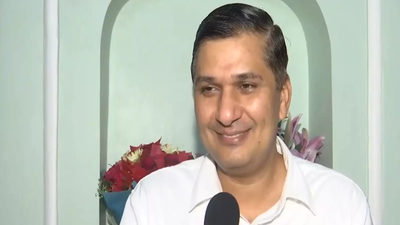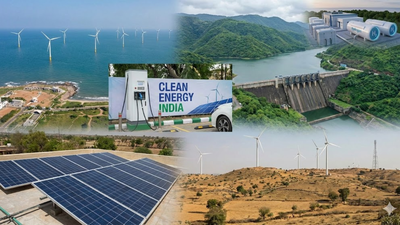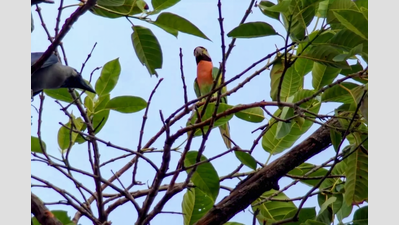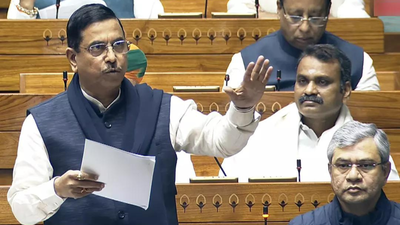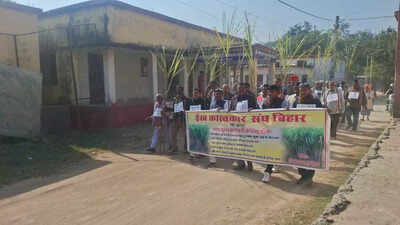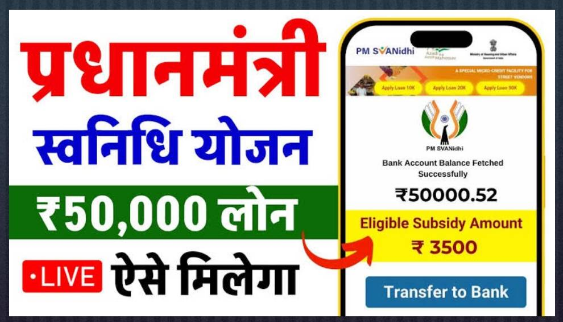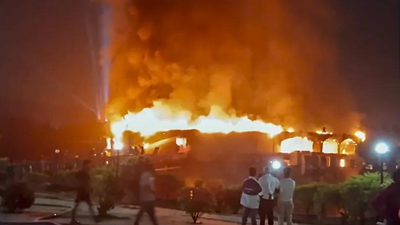NEW DELHI: Delhi Aam Aadmi Party (AAP) president Saurabh Bhardwaj on Wednesday alleged that four government agencies “worked together” to manipulate the national capital’s air quality data on the night of Diwali, terming it a “criminal act” following reports that an Air Quality Index (AQI) reading of 1763 was recorded at the Nehru Nagar monitoring station before it was shut down.Speaking to ANI, Bhardwaj said, “They are corrupt and criminals, what they have done is a criminal act… Four different government agencies worked together to collect Delhi’s pollution data on the night of Diwali… Today’s news states that Nehru Nagar station recorded an AQI of 1763, after which it was shut down. They are playing with people’s health…”The remarks from AAP came shortly after Delhi environment minister Manjinder Singh Sirsa presented data claiming that the festival of Diwali had only a minimal impact on the city’s overall pollution levels. Sirsa alleged that the Aam Aadmi Party (AAP) is attempting to hold “Diwali, Hindus, and Sanatanis” responsible for Delhi’s air pollution, calling it a “sin” to link the festival with the capital’s worsening air quality.In an interview with ANI, Sirsa lashed out at AAP for what he described as a politically motivated attempt to ban Hindu religious practices, saying, “It’s not the crackers..The Aam Aadmi Party is putting all its efforts into proving that the pollution in Delhi is due to Diwali. They’re focused on this because they have a particular vote bank to please. They’re working hard to ban Diwali by saying that lighting lamps and bursting firecrackers creates smoke.” To counter AAP’s narrative, Sirsa provided comparative data from past years to demonstrate that Diwali’s impact on pollution levels is minimal. “According to data from the DPCC and CPCB, the Air Quality Index (AQI) stood at 345 on the night before Diwali, which is lower than in previous years. In 2020, it was recorded at 414, in 2021 at 382, and this year, during our time, it was 345. After the bursting of firecrackers on Diwali, the AQI rose slightly to 356, an increase of just 11 points,” he explained.The minister further highlighted that even in years when firecrackers were banned, AQI levels increased significantly. “Last year, despite a ban on firecrackers, the AQI went up from 328 on the eve of Diwali to 360 the following morning, a rise of 32 points. The year before, in 2023, it increased from 218 to 301, marking an 83-point jump.”Sirsa insisted that it is misleading to place the blame solely on Diwali. “It would, therefore, be misleading to blame Diwali firecrackers alone for the rise in pollution levels. There may have been some impact, but what the Aam Aadmi Party is attempting to suggest that Diwali, Hindus, and Sanatanis are responsible for Delhi’s pollution is a sin,” he said.Sirsa accused the AAP of scapegoating Diwali for the capital’s rising pollution levels, alleging that the opposition’s narrative is a ploy to appease a “particular vote bank” by pushing for a ban on the festival’s traditions, including diyas and crackers.“Aam Aadmi Party is fully focused on proving that the pollution here in Delhi is due to Diwali. This is because they have a particular vote bank, whom they want to appease, and that’s why they are trying hard to prove that Diwali needs to be banned due to smoke from diyas and crackers, due to which pollution happens,” Sirsa told in an interview.The minister’s sharp retort comes amid a renewed blame game in Delhi, where the Air Quality Index (AQI) dipped slightly to 345 on the eve of Diwali but rose to 356 after the firecrackers, sparking accusations from AAP leaders that the festival exacerbates winter smog. Sirsa labelled the opposition’s fixation as “dishonest”, insisting firecrackers play a minor role compared to systemic issues like stubble burning in neighbouring states.“It’s dishonest to solely blame firecrackers for pollution. Yes, they may have had some effect, but the opposition is focused on ‘Diwali, Hindus, and Sanatanis are responsible for pollution…’ I do feel they are trying to (communalise the issue). If they were fair, they could have raised this yesterday as well; the AQI was 345 then, too, but they didn’t tweet about it. They’re also claiming the data is manipulated, but they also say we manipulate EVMs too,” he remarked, drawing parallels to AAP’s broader allegations of electoral fraud.The Delhi environmental minister further lambasted AAP’s “lies”, invoking a dramatic admission of defeat in the face of their propaganda machine.“In front of Kejriwal and his team’s lies, we fold our hands. We don’t even claim to match them. We admit, we’re nothing in front of their lies. Big names have surrendered before them. Their lies are unmatched,” Sirsa conceded with sarcasm, before pivoting to transparency. “But the data is public, from CPCB, DPCC… Every minute’s data is available online… But they want to control it… They thought AQI would shoot up, and they would create a ruckus against us. In the morning, they attempted to discredit Diwali, and in the evening, they claimed that the data was fake. If the data is fake, then how is pollution even real?” he said. According to the Central Pollution Control Board (CPCB), Delhi’s overall Air Quality Index (AQI) stood at 351 as of 4 pm on Tuesday, post Diwali celebrations.The pollution rate at Lodhi Road was 343; meanwhile, in Sirifort, it was 274. The AQI in Greater Noida and Ghaziabad was 282 and 324, respectively.An AQI between zero and 50 is considered ‘good’, 51 and 100 ‘satisfactory’, 101 and 200 ‘moderate’, 201 and 300 ‘poor’, 301 and 400 ‘very poor’, and 401 and 500 ‘severe’.
